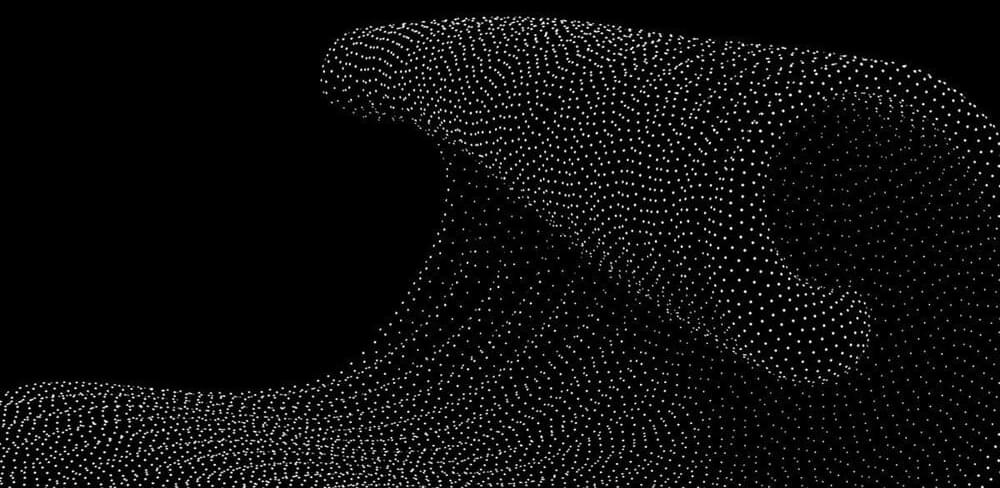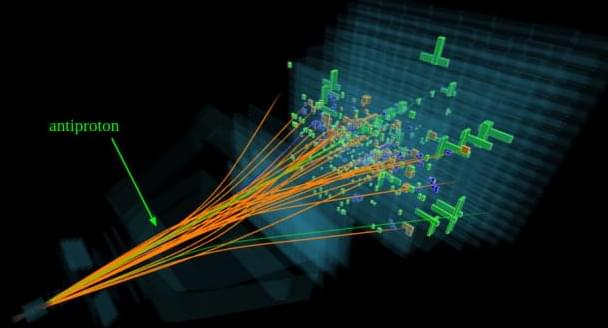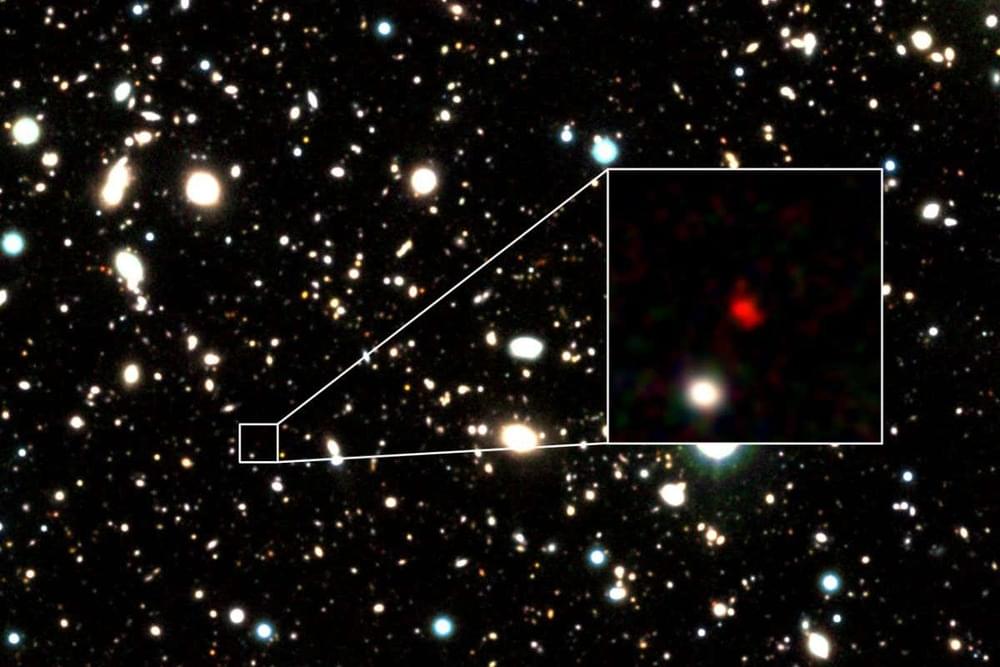The W boson measurement provides insight into the weak nuclear force, and could explain other longstanding mysteries like antimatter imbalance and dark matter.




At the Quark Matter conference today and at the recent Rencontres de Moriond conference, the LHCb collaboration presented an analysis of particle collisions at the Large Hadron Collider (LHC) that may help determine whether or not any antimatter seen by experiments in space originates from the dark matter that holds galaxies such as the Milky Way together.
Space-based experiments such as the Alpha Magnetic Spectrometer (AMS), which was assembled at CERN and is installed on the International Space Station, have detected the fraction of antiprotons, the antimatter counterparts of protons, in high-energy particles called cosmic rays. These antiprotons could be created when dark-matter particles collide with each other, but they could also be formed in other instances, such as when protons collide with atomic nuclei in the interstellar medium, which is mainly made up of hydrogen and helium.
To find out whether or not any of these antiprotons originate from dark matter, physicists therefore have to estimate how often antiprotons are produced in collisions between protons and hydrogen as well as between protons and helium. While some measurements of the first have been made, and LHCb reported in 2017 the first-ever measurement of the second, that LHCb measurement involved only prompt antiproton production – that is, antiprotons produced right at the place where the collisions took place.

A galaxy called HD1 may be the most distant object astronomers have ever spotted. Its astonishing brightness is difficult to explain and may be due to an enormous black hole at its centre or the creation of extremely massive primordial stars, both of which confound our understanding of the early universe.
Fabio Pacucci at the Harvard-Smithsonian Center for Astrophysics in Massachusetts and his colleagues found HD1 by sifting through large public data sets from several of the most powerful telescopes available. They then observed it again with the Atacama Large Millimeter/submillimeter Array (ALMA) in Chile.
Those observations showed that HD1 is about 33.4 billion light years away, more than a billion light years further than the previous most distant object ever spotted, a galaxy called GN-z11. Such a distance is possible, despite the age of the universe being only about 13.8 billion years, because of the accelerating expansion of the cosmos.


This image from the NASA/ESA Hubble Space Telescope reveals tendrils of dark dust threading across the heart of the spiral galaxy NGC 7172. The galaxy lies approximately 110 million light-years from Earth in the constellation Piscis Austrinus. The lane of dust threading its way across NGC 7,172 is obscuring the luminous heart of the galaxy, making NGC 7,172 appear to be nothing more than a normal spiral galaxy viewed from the side.
When astronomers inspected NGC 7,172 across the electromagnetic spectrum they quickly discovered that there was more to it than meets the eye: NGC 7,172 is a Seyfert galaxy—a type of galaxy with an intensely luminous active galactic nucleus powered by matter accreting onto a supermassive black hole.
This image combines data from two sets of Hubble observations, both proposed to study nearby active galactic nuclei. The image also combines data from two instruments—Hubble’s Advanced Camera for Surveys and Wide Field Camera 3.

We live in the Milky Way galaxy, an immense, flat, spiral galaxy surrounded by a massive halo of stars and dark matter. The disk of stars, gas, and dust in which the Sun resides is fully 120,000 light years across; a soul-crushing distance on the human scale. In the middle of the disk is the central bulge, a lozenge-shaped hub of stars.
How did all this structure come together? We know it didn’t all happen at once, but what were the different chapters in the galaxy’s life? What is the timeline of the Milky Way?
This has been the subject of intense research for decades, but new tools are now online that help target specific structures and stars, aiding in understanding how the galaxy came to be the way it is today. In newly published research, a pair of astronomers has tackled this problem and discovered something surprising: One part of the Milky Way is much older than previously thought, changing how we think our cosmic home was constructed [link to paper].

Hackers so far are focusing on decentralized finance (DeFi) projects to steal crypto this year, a new report found, a reversal from 2021 when they used scams and online fraud for most of their exploits.
So far, investors have lost over $1.22 billion to hackers in the first three months of the year, nearly eight times more than the $154 million lost in the first quarter of 2021, according to crypto security firm Immunefi. Ninety-nine percent of those losses were from software exploits, the report found, specifically the hacks against Wormhole and Ronin.
This is not an anomaly, experts warn. It’s likely this kind of nefarious activity will become more common, while scamming of investors could wane.

The Hubble Space Telescope has smashed a record, identifying its most distant star ever. The star is so far away that its light has taken nearly 13 billion years to reach us, meaning it is from the first one billion years after the Big Bang.
Hubble’s previous record for farthest star observed, set in 2018, was for a star from 4 billion years after the Big Bang. So this new finding is a considerable step older and was only observable thanks to a fortuitous cosmic alignment. “We almost didn’t believe it at first, it was so much farther than the previous most distant, highest redshift star,” said astronomer Brian Welch of the Johns Hopkins University in Baltimore, lead author of the paper, in a statement.
The star in question, named Earendel, which means “morning star” in Old English, is massive, coming in at at least 50 times the mass of our sun. It is also millions of times brighter. However, even allowing for its mass and brightness, it is so far away that it was only possible to observe it thanks to a huge galaxy cluster that passed between it and us. The cluster’s gravity is so large that it warps the light coming from the star and acts as a magnifying class.